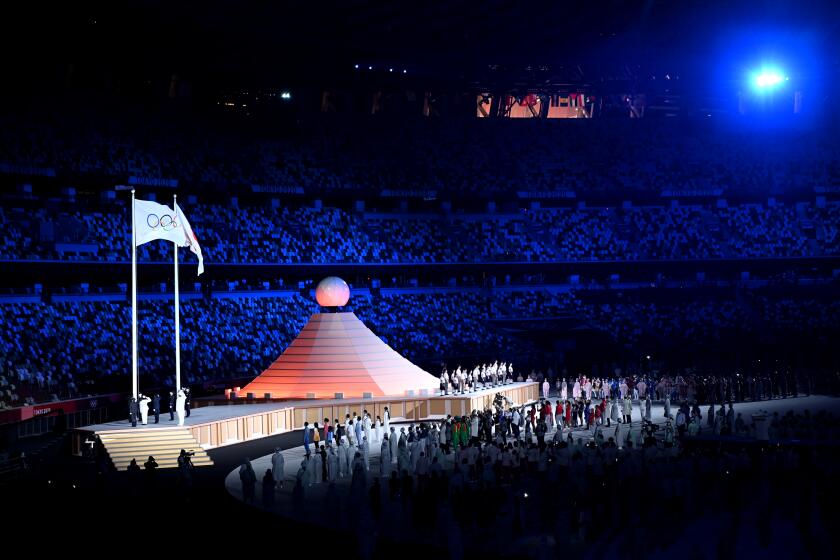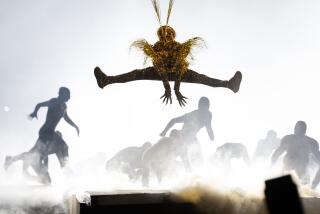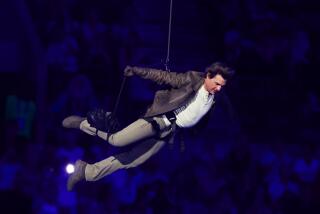There’s reason for Olympic cynicism. The opening ceremony was a much-needed cure
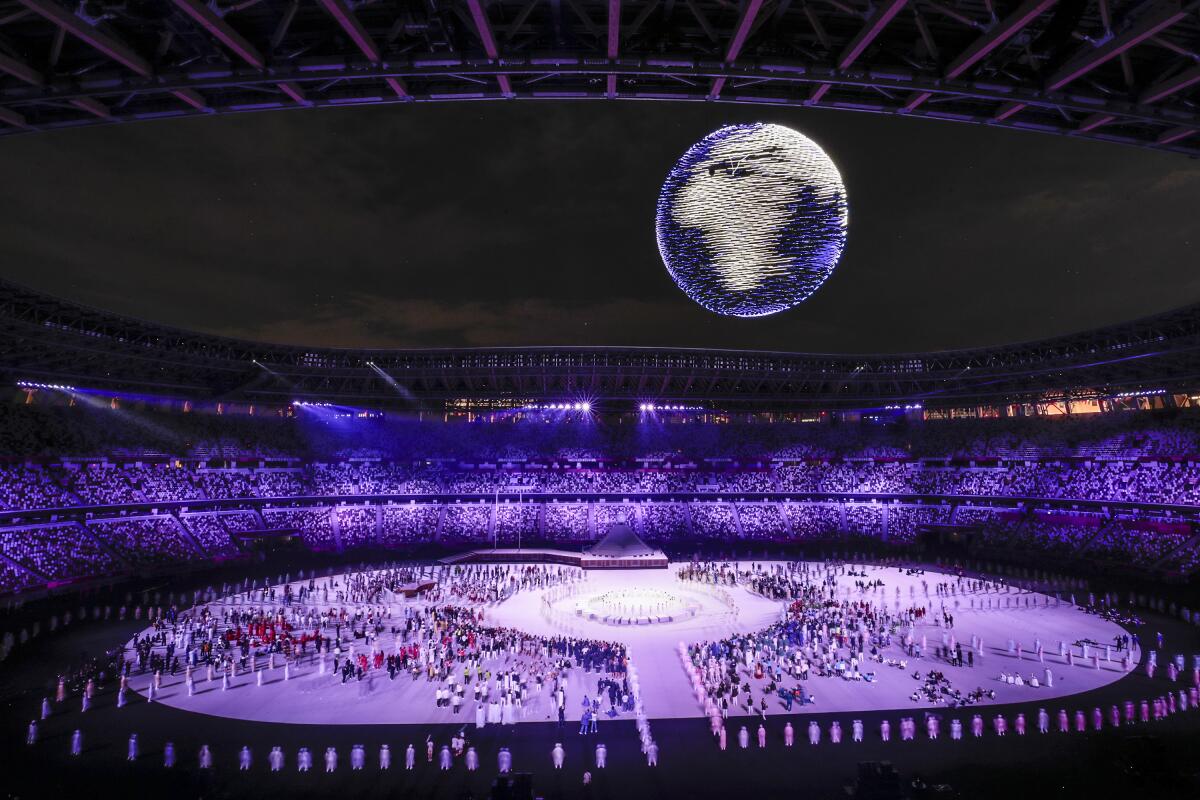
- Share via
If you had a mind to or were assigned to, you could stay up late or get up early Friday to watch the opening ceremony of the delayed 32nd Olympic Games — the 2021 2020 Olympics — streamed live from Tokyo, beginning at 4 a.m., courtesy of NBC. “The Today Show” anchor Savannah Guthrie and Mike Tirico from NBC Sports were your genial hosts. They loved it. (It replays Friday at 4:30 p.m. Pacific.)
The run-up was fraught. The creative director of the opening and closing ceremonies resigned just a day earlier when his Holocaust joke in an old comedy sketch was brought to light; he had already replaced an earlier creative director who had left over a joke about a comedian’s weight. The composer for the ceremonies also had been dismissed, having confessed in an interview back in the 20th century that he used to bully disabled students. Given the lateness of the departures, it was hard to figure what might have been changed, and perhaps nothing was. The music was good, in any case.
And, of course, there’s a pandemic on; Japan is poorly vaccinated; there is COVID in the Olympic village and hardly anyone in the bleachers. Protesters outside the stadium called for the ceremony to stop and the Games to be canceled. None of this was mentioned by the hosts, unless it was when I had the sound down during the Parade of Nations, which I did at times because there is only so much orchestral parade music one can take.
HBO’s ‘100 Foot Wave’ follows surfer Garrett McNamara to a town in Portugal where the waves are bigger than anywhere. And it’s something special.
The times being what they are, the mood of the “creative” segments was more contemplative than flashy, more serious than celebratory. A runner ran on a treadmill, with two or three dozen other figures, artfully placed throughout the cavernous space, pantomiming various athletic things, sometimes in “real time” slow-motion. (This represented, we were told, “the idea of apart but not alone.”) Then came a physiology metaphor, with performers manipulating long elastic ropes meant “to convey the workings of the body and the heart.” Maybe you wouldn’t have known that without being told, and maybe it wouldn’t matter if you did. It did look very cool.
Singer-songwriter Misia sang the national anthem, wearing a kind of Olympic-colored upside-down-flower dress that Bjork might want to borrow. A sort of memorial dance piece was linked to a moment of silence “to remember all those friends and loved ones who are no longer with us, in particular because of the COVID-19 pandemic,” which included mention of the Israeli athletes assassinated in Munich in 1972. People of the world were invited to participate.
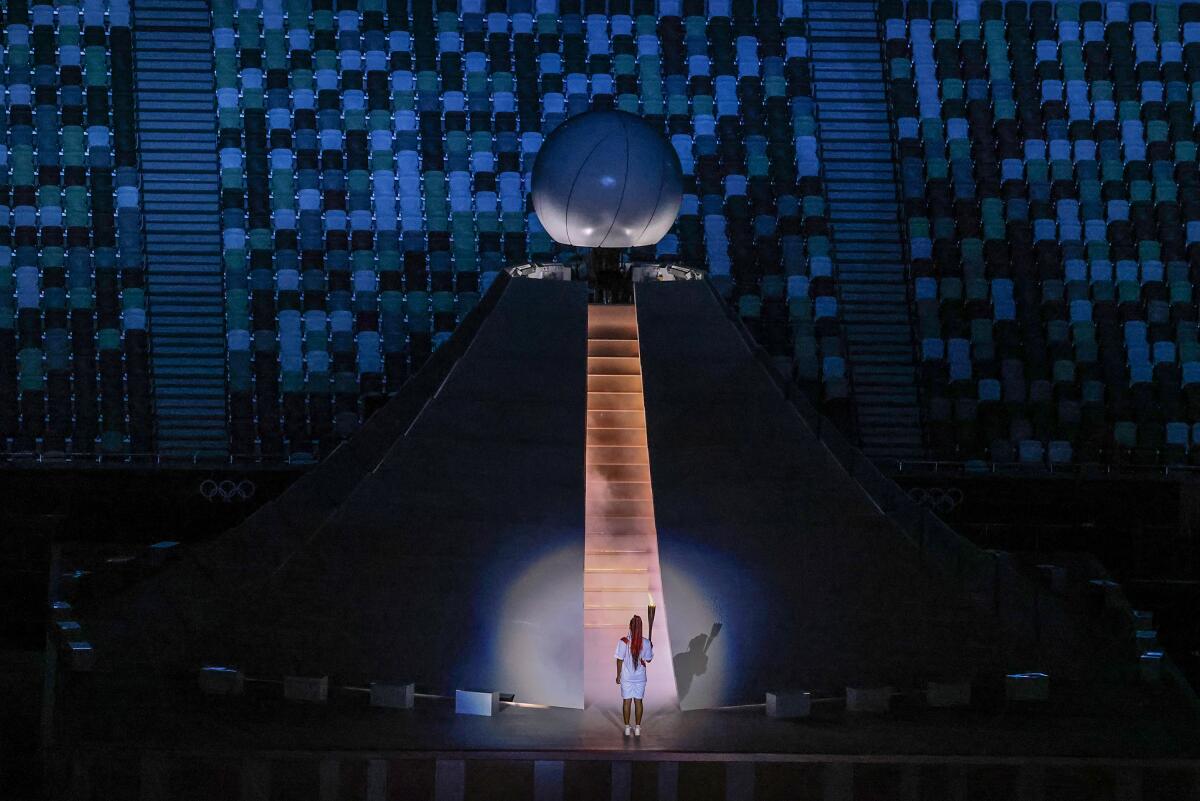
The main act involved woodworking, construction, acrobatics, dance (and tap dance), and was meant to celebrate “the history and the great artistry of Japanese carpentry.” (The wood used in the scene was from trees grown from seeds brought to the 1964 Tokyo Games by athletes from around the world.) It suggested at times a mix of Robert Wilson, Cirque du Soleil and a culture-appropriating Madonna video. When the camera moved in close, it was clear that all involved were in character, as in a crowd scene in a Broadway musical. The choreography was lovely, and nothing was overdone. Not surprisingly, five big interlaced Olympic rings were produced at the end.
The relative spareness of the staging seemed appropriate, not only for practical social distancing but in the way it paradoxically made humans seem somehow bigger by putting space around them; the Olympics are all about the amazing feats those flyspecks are capable of. Although it was a television event, combining filmed segments, animations and a few things that were meant to be seen from an eye in the sky, it was not as designed for the camera as these things sometimes are — odd, of course, since relatively few people were there to see it in person.
Filmmaker Garrett Bradley explains how she earned the tennis champion’s trust: “I tried to reinforce that I wasn’t press as much as possible.”
The athletes in the Parade of Nations, ostensibly the heart of the opening ceremony, were masked, which was good to see. New this year was having male and female athletes hold their national flags in tandem, which is probably not as easy as it looks, and it didn’t look easy. The hosts’ commentary here had something of the flavor of the Rose Parade, but instead of “The dragon is made from tulips and chrysanthemums,” you learned that Argentina is the second largest country by area in South America, that it has been a long time since Iceland won anything at the Olympics, and that in Indonesia badminton can draw crowds of up to 12,000. It tended to blur into something like “sport sport youngest oldest country country win sport spirit sport,” with every once in a while a phrase from outside the Olympic bubble, such as “Yemen, which of course has been devastated by civil war since 2014.” Of course.
Tongan flag bearer Pita Taufatofua (taekwondo is his Summer Olympics sport, cross-country skiing his Winter) once again paraded shirtless, body oiled like the piece of fine machinery it is. The team from Bermuda wore Bermuda shorts. Ghanaian triple jumper Nadia Eke’s mask glittered glamorously.
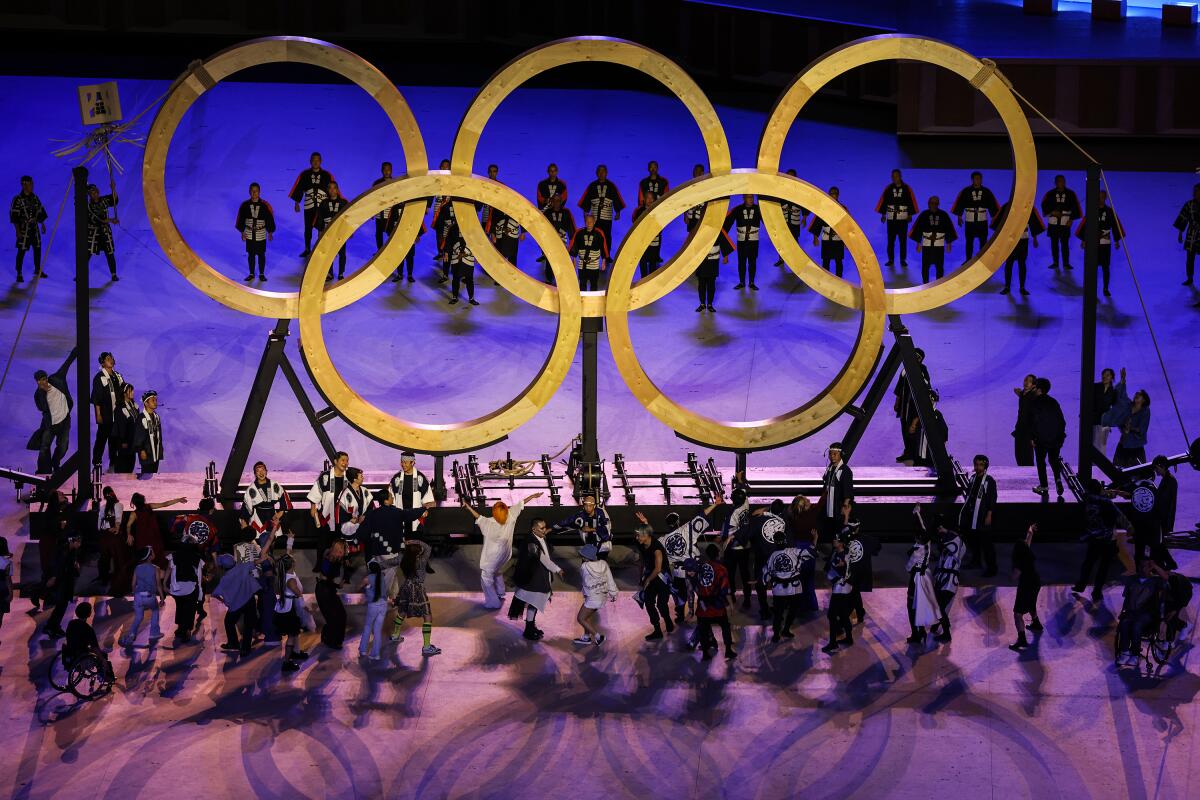
The parade does go on a very long time, unavoidably, what with all the countries involved. (On the stream, NBC split the screen to get the commercials in.) Eritrea gets its moment as deservedly as does the United States; those who are about to lose are saluted too. And, to be sure, most nations will go home empty-handed; it’s the showing up that counts. The main points of interest in this leg of the trip are the expression of national style through costume and the eternal question of whether what the U.S. team is wearing (Ralph Lauren again) will be any better than what it wore last time. This year they were dressed like French sailors, with striped shirts and scarves tied at their necks. (French sailors chanting “U.S.A.!,” that is, as is our wont.) The French athletes, meanwhile, wore blue, white or red jackets to re-create their flag. Clever!
Once again, Olympics organizers chose to highlight John Lennon’s perennially misunderstood “Imagine,” a song that envisions a world without nations (also no religion, heaven, hell, possessions), placed just after we had spent a couple of hours watching a Parade of Nations. (At least no one sang “Hallelujah.”) It was arranged by Hans Zimmer, the movie soundtrack man, and featured John Legend and Keith Urban among its international collage of singers. Dove-shaped projections and paper doves were a healthy substitution for the real thing, released in the name of peace.
IOC president Thomas Bach isn’t an emperor but acted like one, forcing the Games to take place because the IOC would have lost almost $4 billion in broadcast revenues if the Olympics were cancelled.
Did the fact that this was performed to a mostly empty arena seem weird? (Multicolored seats gave the impression of a crowd, even with no one sitting in them.) No, it seemed sane!
The final acts let in some fun. Human performers in head-to-toe body stockings found clever ways to embody the pictographs (still in use) Tokyo devised in 1964 to represent different events. (It did go on a bit — there are a lot of events.) Another segment involved lights in the stadium and throughout the city. There was a kabuki character and a highly animated pianist. At some point in all this, 1,800 computer-controlled lighted drones rose above the stadium to create a model of the planet Earth. Had aliens floated down from it to demand peace now, an end to fossil fuels and that everyone get vaccinated, I would not have been surprised. Naturally, there were fireworks — but a reasonable amount.
The Olympic flame entered the stadium to the strains of Ravel’s “Bolero” and was passed to three famous baseball players, Shigeo Nagashima, Hideki Matsui and Sadaharu Oh. Eventually it made its way to tennis star and pride of Japan Naomi Osaka, who ascended an abstract representation of Mt. Fuji to light the big official eternal torch that declares, “It’s on.”
More to Read
The complete guide to home viewing
Get Screen Gab for everything about the TV shows and streaming movies everyone’s talking about.
You may occasionally receive promotional content from the Los Angeles Times.
